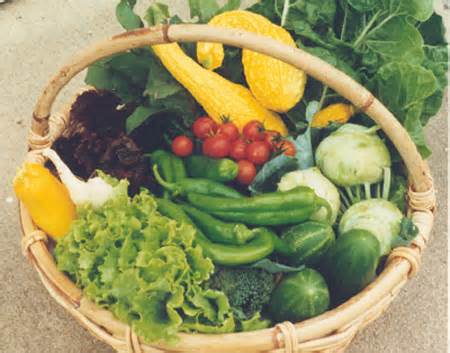Please support our coverage of democratic movements and become a supporter of rabble.ca.
Farmers operating Community Supported Agricultural ventures (CSAs) have created local ecological, alternative food systems. These small scale farmers sell shares to customers in the spring in exchange for a weekly supply of locally grown, organic vegetables and fruits that lasts for the growing season. But these farmers offer much more to the customers and communities that they serve.
When I joined my first CSA in the early 1990s, I had a young son and an infant daughter whom I wanted to nurture with foods free from genetic modification. I understood that crops grown with the use of pesticides and synthetic fertilizers could be just as nutritious as organic produce. I chose organic because I did not want my children consuming pesticide residues. I also wanted to minimize our family’s ecological footprint. This last point became very important when the number of children I had to feed grew to five.
In addition to seasonal fruits and vegetables our farmer also sold free range eggs, dairy products from small local producers who chose to avoid the use of growth hormones, as well as ethically produced meat and poultry raised without unnecessary doses of antibiotics.
I wanted my children to know the people who grew our food and to make sure that our farmer and his family received a fair price for food that they provided. It was also important that my children meet farmers who grew a wide variety of crops and could feed their families as opposed to farmers who were buying their own food at the local grocery store because they grew a single cash crop.
According to the Farm and Food Care foundation, over the past 110 years the traditional Canadian farm has undergone major changes. Less than on per cent of all income earners are farmers. That’s a decrease of 91 per cent. The number of farms has dropped by 60 per cent. Farm sizes have increased by 228 per cent to an average of 778 acres per farm. An acre of farmland that once cost $17 per acre is now $2,227 per acre. One farmer can feed 120 people.
Conventional farmers tend to have greater input costs in the form of large machinery, pesticides and synthetic fertilizers than smaller scale organic farmers. Relying on a single commodity for income limits a farmer’s ability to thrive financially when yields are particularly low or when an overabundance floods the market driving prices down. In 2012, conventional farmers earned 33 cents for every dollar spent on food.
Farming half an acre of land means that a typical CSA can provide weekly produce for 50 to 75 families. Generally the inputs are smaller because much of the work can be done with smaller, less expensive equipment and without the use of pesticides and synthetic fertilizers. These farmers are able to capture closer to 80 cents for every dollar customers spend on food.
Consumers establish relationships with farmers when they support local farmers’ markets and CSAs. Farm visits allow consumers to form ties to the land, surrounding environment and individual farm families. Consumers are more likely to eat according to the abundance each season offers. All of this creates the sense of stewardship in consumers that’s needed to protect rural lands and farm families.
The growing global economy often demands that farmers produce greater amounts for export in the vain attempt of feeding the world’s hungry. Over-production usually drives down commodity prices and can result in good food being left in fields to rot. Without changes to the current global economy there is no guarantee that the world’s poor will be able to afford these foods.
Multinationals often travel the globe buying up large swaths of land or entire crop productions to ensure cheap food prices alongside large profit margins. However, when you factor transportation into the equation their carbon footprint makes these foods uneconomical. Imported organic food can also have a large carbon footprint depending on distance travelled.
For the past 70 years, since the end of the Second World War, farmers have been encouraged to use pesticides and fertilizers derived from petrochemicals. But, the damage caused to humans, wildlife, insects and the environment has been well documented.
There’s a finite amount of oil in the world so when the barrels run dry are we really going to choose pesticides and fertilizers over fueling our cars, or using crude oil to manufacture heating oil, plastics, paints, lubricants and asphalt?
Relying on biofuels may not be a viable option since large scale production keeps valuable farmland out of food production which then threatens our ability to feed ourselves.
Traditional and industrial methods of food production have not solved the problem of hunger within Canada or around the world. That’s because supply and demand are just one part of a very complicated equation. Currently, more than enough food is produced to feed everyone in the world. People go hungry because they have insufficient incomes, choice is limited by where they live, they don’t have access to land to grow their own food, and because food is used as a weapon in politics and policies. The reality is we need a more equitable society.
Support expansion of small-scale organic farms in rural and urban areas, community gardens, and replacing lawns with edible gardens to make food accessible to a greater number of Canadians. At the same time vote for federal parties that support a living wage; guaranteed livable income; national housing policy; and national child care policy. A caring society is within reach.
Please support our coverage of democratic movements and become a supporter of rabble.ca.



